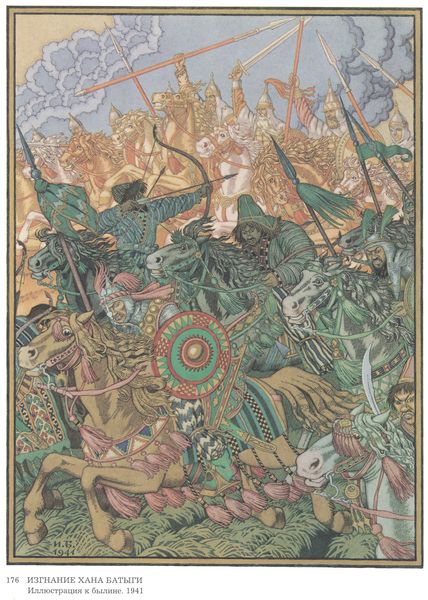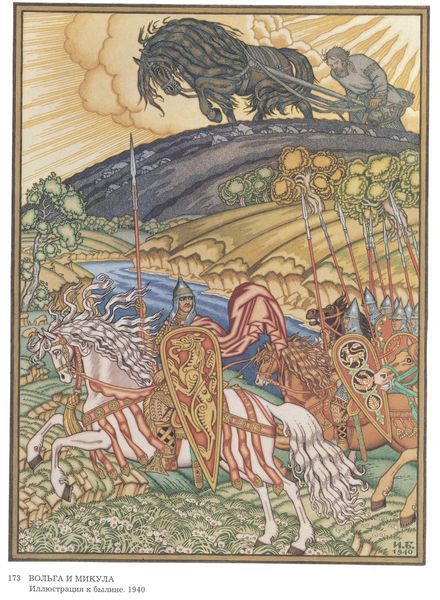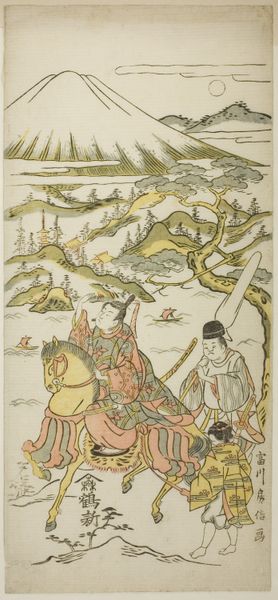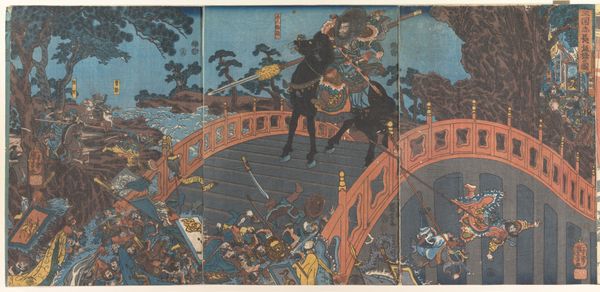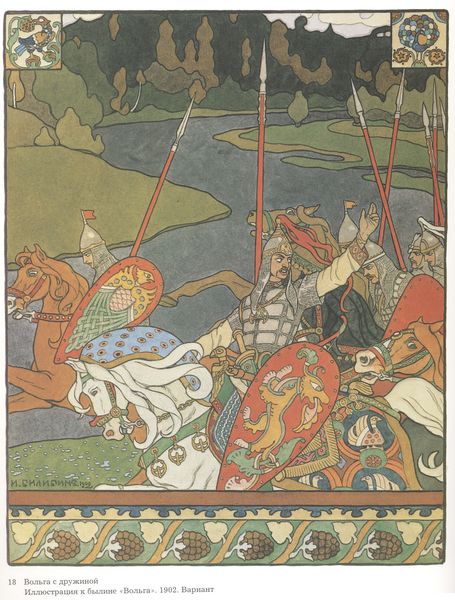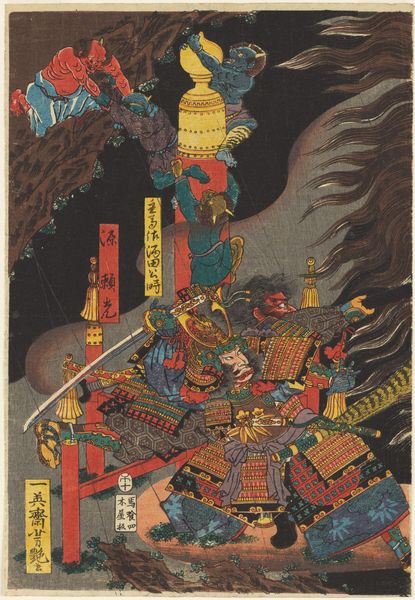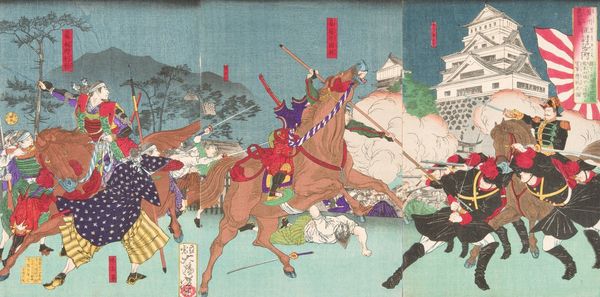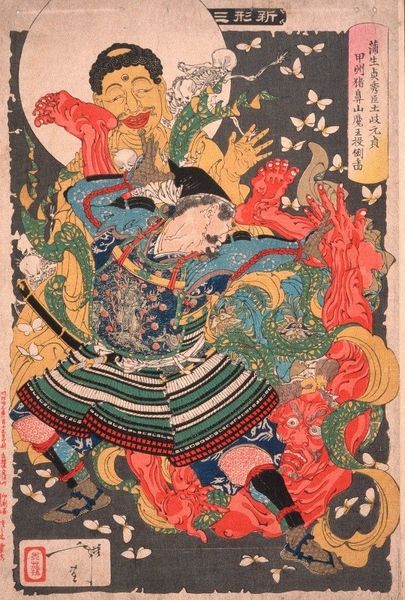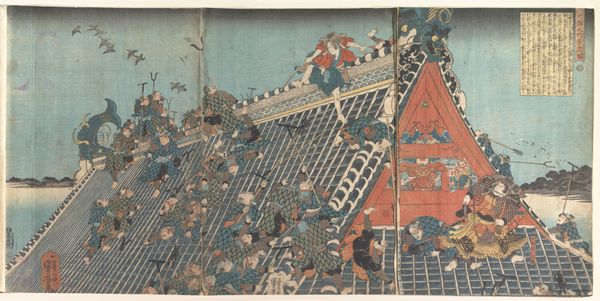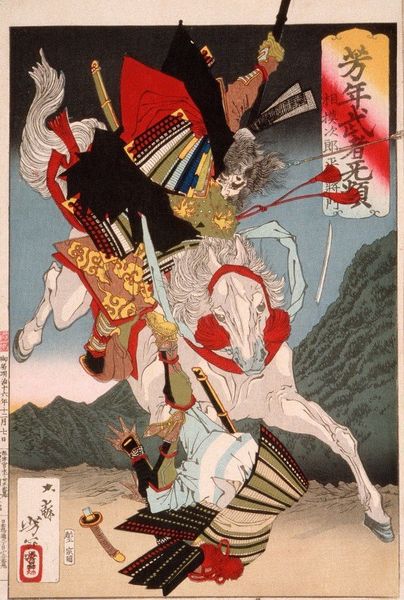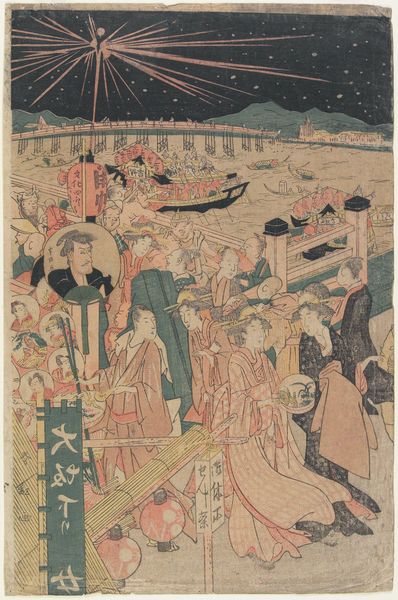
drawing, ink, pen
#
drawing
#
medieval
#
narrative-art
#
pen drawing
#
pen illustration
#
war
#
ink line art
#
ink
#
folk-art
#
mythology
#
pen work
#
russian-avant-garde
#
pen
#
history-painting
Copyright: Public domain
Editor: This ink drawing, "Illustration for the epic 'Volga and Mikula,'" created in 1913 by Ivan Bilibin, feels like a page ripped straight from a medieval illuminated manuscript, even though it was created in the early 20th Century! What sort of narrative weight do you think Bilibin wanted to convey? Curator: Bilibin draws heavily on traditional folk art and historical Russian narratives here. Notice how he uses flat perspectives and decorative patterns, echoing the conventions of icon painting. Consider the figures of Volga and Mikula themselves. Volga represents princely power, riding with his heavily armed retinue, almost weighed down by their metal and regiment. Meanwhile, above we see the free independent plowman Mikula clearing a field, demonstrating immense strength seemingly unconcerned with the armed forces nearby. What does the placement suggest to you? Editor: Well, Mikula’s on top of the hill and higher in the picture plane, so that could indicate his moral authority or perhaps the idea that agricultural labor underpins military power? He does seem untouched and unbothered, the white geese flying away, while below the regiment looks crowded and constricted. Curator: Precisely. Bilibin is tapping into a deep vein of Russian cultural memory here, contrasting the imposed authority of the ruling class with the fundamental power of the peasant. Consider, too, the decorative detailing on the horses, the geometric patterns. These are not just aesthetic choices. They represent a kind of visual coding, accessible to those familiar with traditional Russian ornamentation and folktales, embedding the work in its cultural context. Editor: So the image speaks on multiple levels, not just illustrating a story, but also embodying a set of cultural values and perhaps even some social commentary? Curator: Exactly! It’s a beautiful example of how an image can function as a carrier of complex cultural information. Symbols are everywhere, if one learns to read their coded intent. Editor: This has given me a whole new perspective on how to approach this piece – it's more than just a pretty illustration; it's a vessel for cultural memory. Curator: Indeed. By decoding these symbols, we begin to understand how deeply history and identity are interwoven with visual representation.
Comments
No comments
Be the first to comment and join the conversation on the ultimate creative platform.
